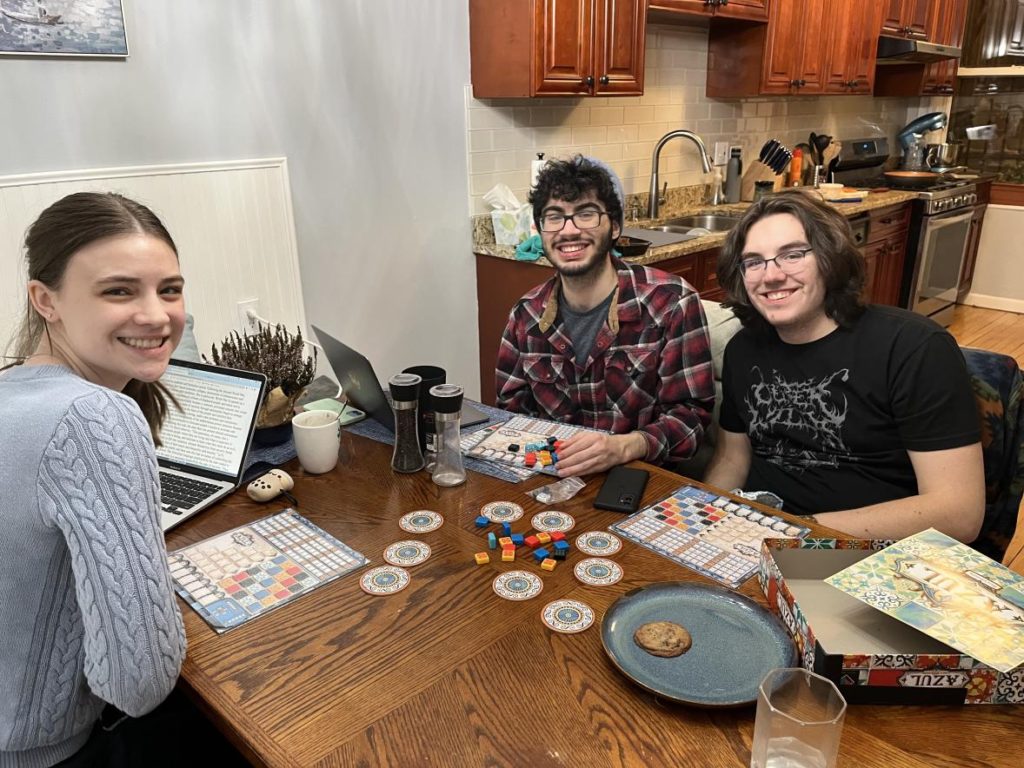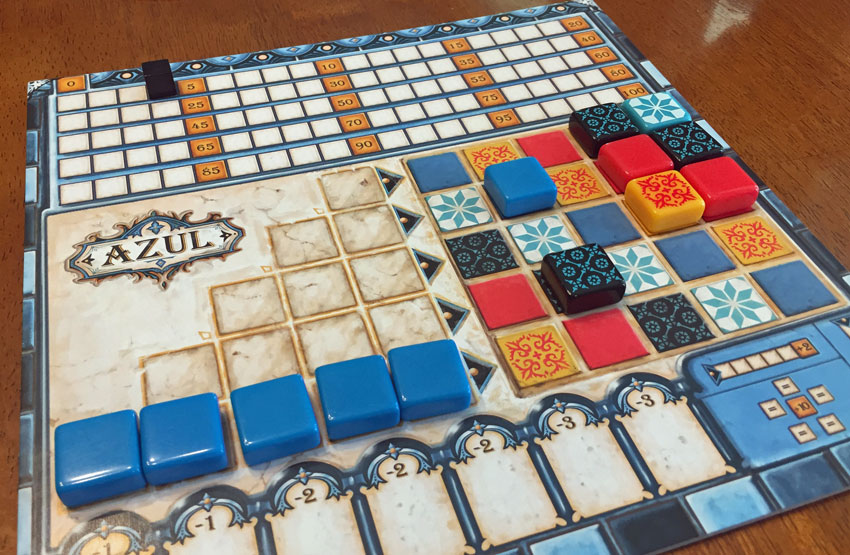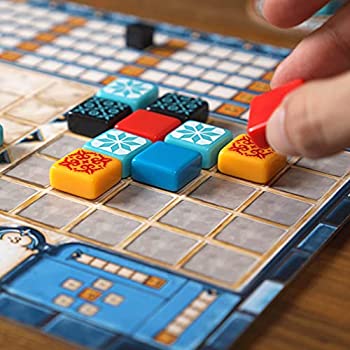Azul is a board game for 2-4 players which centers around resource management and strategy. Each player chooses in turns to take tiles of the same kind from packages in the store in the middle, discarding the non-matching pieces and taking their chosen tiles to invest towards their mosaic. Once all tiles have been taken, players can transfer tiles they have earned to form their mural, and tally up points. Once one player has completed a full row of their mosaic, the player with the most points wins. The structure of the game centers around gathering resources by splitting up packages for same-colored pieces and matching them to the prescriptive mosaic on the player’s mat, encouraging players to create arrangements with touching pieces and full columns or sets of colors. Players lose points for taking tiles they cannot use.

The game mechanics include choosing which resources to take, and placing them strategically on your board (by choosing which slot you wish to invest towards, and how you gather those necessary resources). As there are a limited number of randomly selected tiles to choose from during each turn, and players can only take tiles in certain groupings, players must focus on which methods of earning points they want to pursue- whether making touching groups of tiles, or creating a mosaic with the same color present in every row. This also means that a competitive element is introduced, as players come into conflict over the finite amount of resources. One player can take the red tiles another needed to invest into a piece on the fourth row, for example, or players could leave the last one to take the tiles with a large amount of useless tiles that will cost them points.
As the players are competing over resources, the player who goes first has an advantage over the others. In Azul, players can intentionally make themselves the player who goes first next round by being the first to take tiles from the discard pile in the middle, and sacrificing one point. While the player does lose a point, it seems that being able to go first is an advantage that outweighs the sacrifice, and offers a significant boost to the player who gets it. Ideally, the way players can attain this advantage means that any player but the one who went first can go first next round, but given the layers of strategy at play this can mean that one person dominates the turn order and potentially unbalance the game.

Given the theming of mosaic creation, I found myself wishing there was more opportunity for individuality and creativity in the design of the game. Every player has the same pre-determined mosaic on a mat to arrange their pieces into, which design-wise is useful both for the current scoring system and to foster competition (as you can more easily predict what your opponents will do while cross-referencing your identical boards), however I can’t help but feel that the intentionally artistic theme and subject matter is lost in this iteration of the game rules, and that the experience might be better served with, at the very least, multiple options of mosaic patterns to choose from. Given the ways the game rewards a nicely made mosaic (granting points for pieces that are touching, rather than randomly placed, or fully completed columns or color sets) it would be interesting to see a system that encouraged players to make their own original mosaic creations.

The theme of resource management, on the other hand, is very well done. Players must choose their investments carefully, as they will be penalized for taking what they do not need (or failing to plan ahead and get enough of whatever color they need). This both creates an element of strategy, as players are as cognizant of not over-investing as they are afraid of under-investing (my sister completely wiped out by getting too much of one resource and lost all the points she gained in that turn, rest in peace) and teaches players not to hoard or waste resources, which is a good message to embed in the design of the game.
Finally, the experience of playing the game was well-served by the pieces, which are colorful and nice to play with in a tactile way. I appreciated the pointkeeping system also occurring on the game mat, with another tile to move around.
